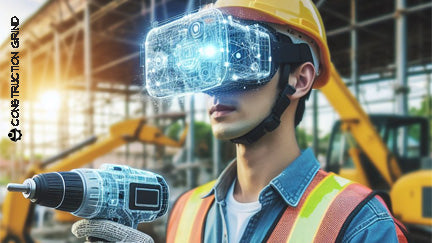
Integrating AI Resources into the Construction Industry
Share
The integration of Artificial Intelligence (AI) resources into the construction industry promises to revolutionize processes, enhance productivity, and improve safety. However, this transformation requires a careful assessment of the pros, cons, and unknown risks associated with AI integration. This article aims to provide a comprehensive analysis of these factors and outline a detailed plan for the successful integration of AI resources into the construction sector.
Pros of Integrating AI Resources:
- Improved Efficiency: AI-powered tools and algorithms can automate repetitive tasks, leading to significant time savings and increased productivity.
- Enhanced Safety: AI systems can analyze data from sensors and other sources in real-time to identify potential safety hazards, thus helping to prevent accidents and minimize risks to workers.
- Cost Reduction: By optimizing resource allocation and streamlining processes, AI can help reduce operational costs and improve project profitability.
- Quality Assurance: AI-driven quality control systems can detect defects early in the construction process, ensuring higher quality outcomes and reducing rework.
Cons of Integrating AI Resources:
- Initial Investment: The upfront costs associated with implementing AI technologies, including hardware, software, and training, can be substantial, posing a barrier to adoption for some construction companies.
- Data Privacy Concerns: AI systems rely on vast amounts of data, raising concerns about data privacy and security, especially when sensitive information such as project plans and employee records is involved.
- Dependency on Technology: Overreliance on AI systems may lead to a loss of critical skills among workers, potentially creating a skills gap and reducing adaptability in the face of challenges.
- Ethical Considerations: AI algorithms may perpetuate biases present in training data, leading to unfair outcomes, particularly in areas such as hiring and resource allocation.
Unknown Risks of Integrating AI Resources:
- Unforeseen Technical Challenges: The complexity of construction projects and job sites may present unforeseen technical challenges that AI systems struggle to address, leading to delays or disruptions.
- Regulatory Compliance: Regulatory frameworks governing AI use in construction may lag behind technological advancements, creating uncertainty around compliance requirements and legal liabilities.
- Impact on Workforce Dynamics: The introduction of AI technologies may disrupt traditional roles and workflows, leading to resistance or friction among workers and management, potentially impacting productivity and morale.
- Long-Term Sustainability: While AI offers short-term gains, its long-term sustainability in the construction industry remains uncertain, particularly as new technologies emerge and market dynamics evolve.
Detailed Plan for Integration:
- Assessment of Current Processes and Needs:
- Conduct interviews and workshops with key stakeholders.
- Analyze data from past projects.
- Create a comprehensive report outlining findings and recommendations.
- Selection of AI Solutions:
- Research and evaluate AI solutions tailored to construction needs.
- Consult with vendors and industry experts.
- Create a shortlist of potential AI solutions and conduct demonstrations.
- Pilot Testing:
- Identify a small-scale project or department for pilot testing.
- Define objectives and success criteria.
- Implement AI technologies and gather feedback.
- Training and Upskilling:
- Develop customized training programs for employees.
- Conduct training sessions or workshops.
- Provide ongoing support and resources.
- Data Management and Security:
- Establish data management protocols.
- Implement cybersecurity measures.
- Conduct regular audits and assessments.
- Integration with Existing Systems:
- Assess compatibility and interoperability.
- Develop APIs or integration frameworks.
- Test integration processes.
- Monitoring and Optimization:
- Implement monitoring tools.
- Analyze performance metrics and user feedback.
- Iterate on AI algorithms and workflows.
- Continuous Improvement:
- Establish a feedback loop for soliciting input.
- Monitor industry trends and advancements.
- Invest in research and development initiatives.
Conclusion: The integration of AI resources into the construction industry offers immense potential for improving efficiency, safety, and quality. By carefully considering the pros, cons, and unknown risks, and following a detailed plan for integration, construction companies can harness the transformative power of AI to drive innovation and success in their operations.
